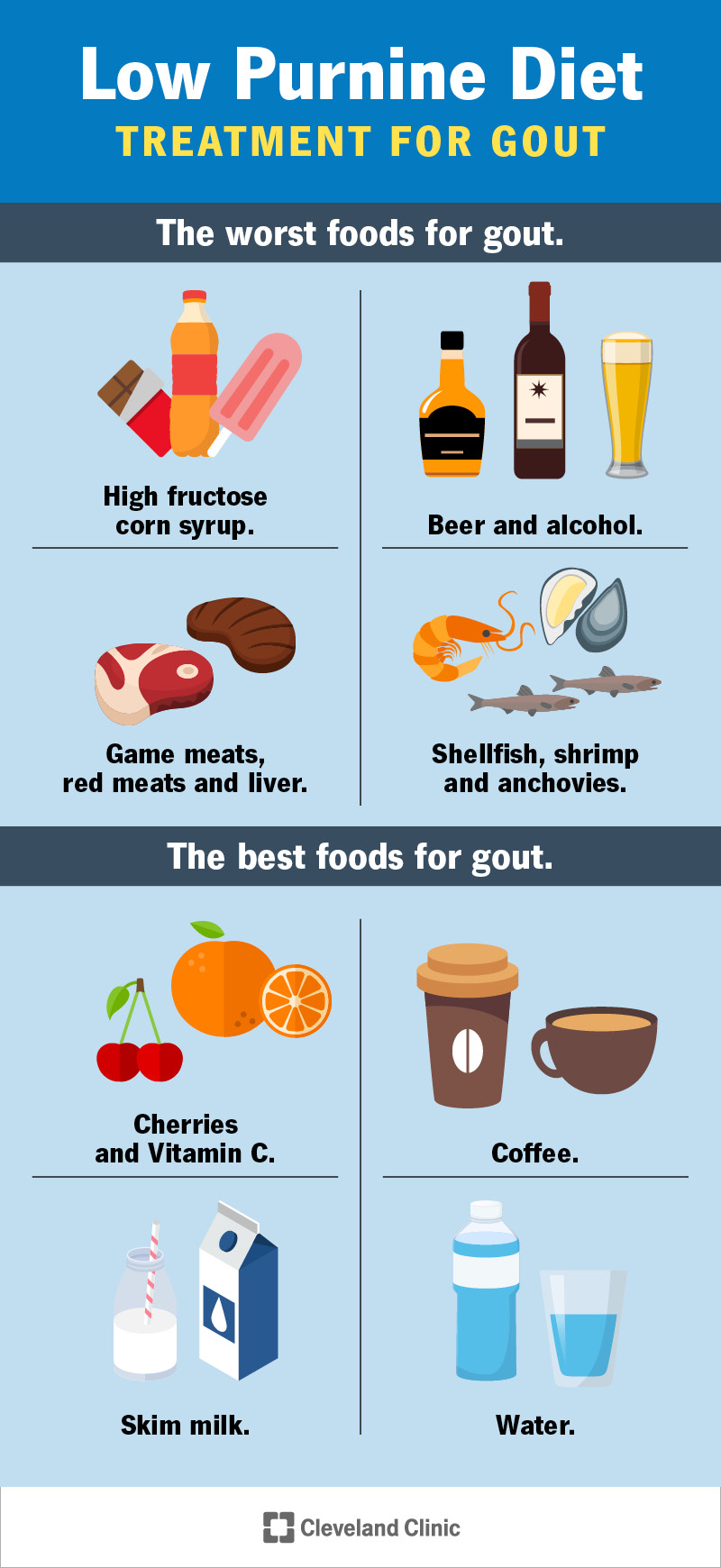A low purine diet is often prescribed for people with hyperuricemia — high levels of uric acid in their blood — which can lead to gout and kidney stones. Purine in our foods breaks down into uric acid in our bodies, so reducing dietary purine helps reduce uric acid levels.

Gout is caused by high uric acid levels in your blood. Extra uric acid forms sharp crystals that settle in your joints, causing swelling and pain. But you can help reduce the amount of uric acid in your body by maintaining a low-purine diet. Reducing uric acid levels can help prevent new crystals from forming, reducing gout attacks.
Advertisement
Cleveland Clinic is a non-profit academic medical center. Advertising on our site helps support our mission. We do not endorse non-Cleveland Clinic products or services. Policy
Purines are chemicals that are naturally found in certain foods and drinks. When your body breaks down these chemicals, uric acid is the byproduct. A low-purine diet reduces the foods and drinks with the highest purine content to reduce uric acid. It also encourages some select foods that may reduce uric acid levels in your body.
Anyone with high uric acid levels in their blood (hyperuricemia) can benefit from reducing high-purine foods. This may help to prevent gout in people with hyperuricemia who haven’t yet developed the disease. It may also help prevent existing gout from progressing and prevent other complications of hyperuricemia, such as kidney stones.
Advertisement
The top 10 foods and drinks that trigger gout are:
While eating particular foods won’t be enough to make gout go away, studies suggest that certain foods and drinks may help reduce uric acid in your body. For example:
However, many healthcare providers prefer to focus on general dietary guidelines rather than particular foods. They suggest that you:
Advertisement
A note from Cleveland Clinic
A low-purine diet is designed to help manage hyperuricemia and its complications, such as gout. But the diet is also a reasonable lifestyle to adopt for general health. It reduces sugar, alcohol and meat and emphasizes plants and alternative sources of protein. This has plenty of benefits outside of reducing uric acid, and it won’t deprive you of any important nutrition. If you’re at risk of developing gout, or of living through another gout attack, a low-purine diet may be worth a try. Ask your healthcare provider if it’s a good option for you.
Last reviewed on 03/14/2022.
Learn more about the Health Library and our editorial process.
Advertisement
Cleveland Clinic is a non-profit academic medical center. Advertising on our site helps support our mission. We do not endorse non-Cleveland Clinic products or services. Policy